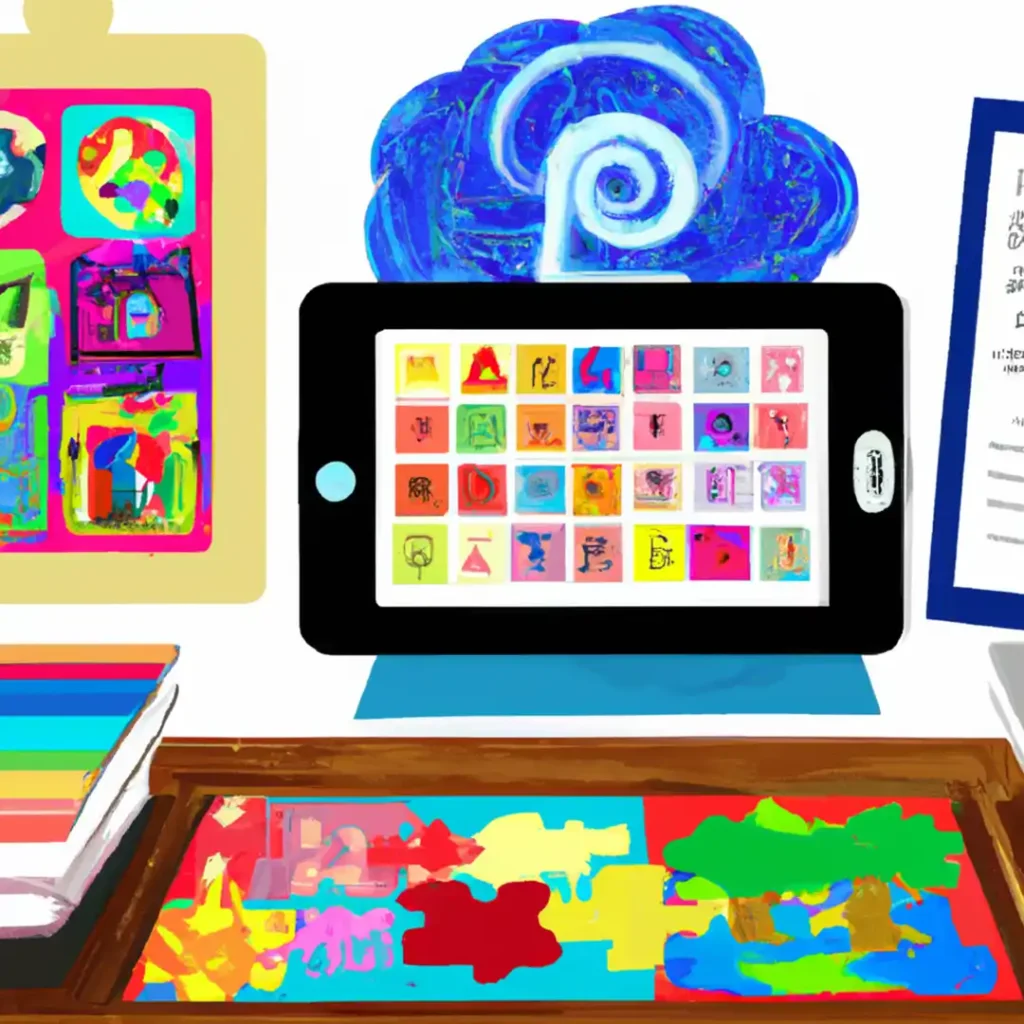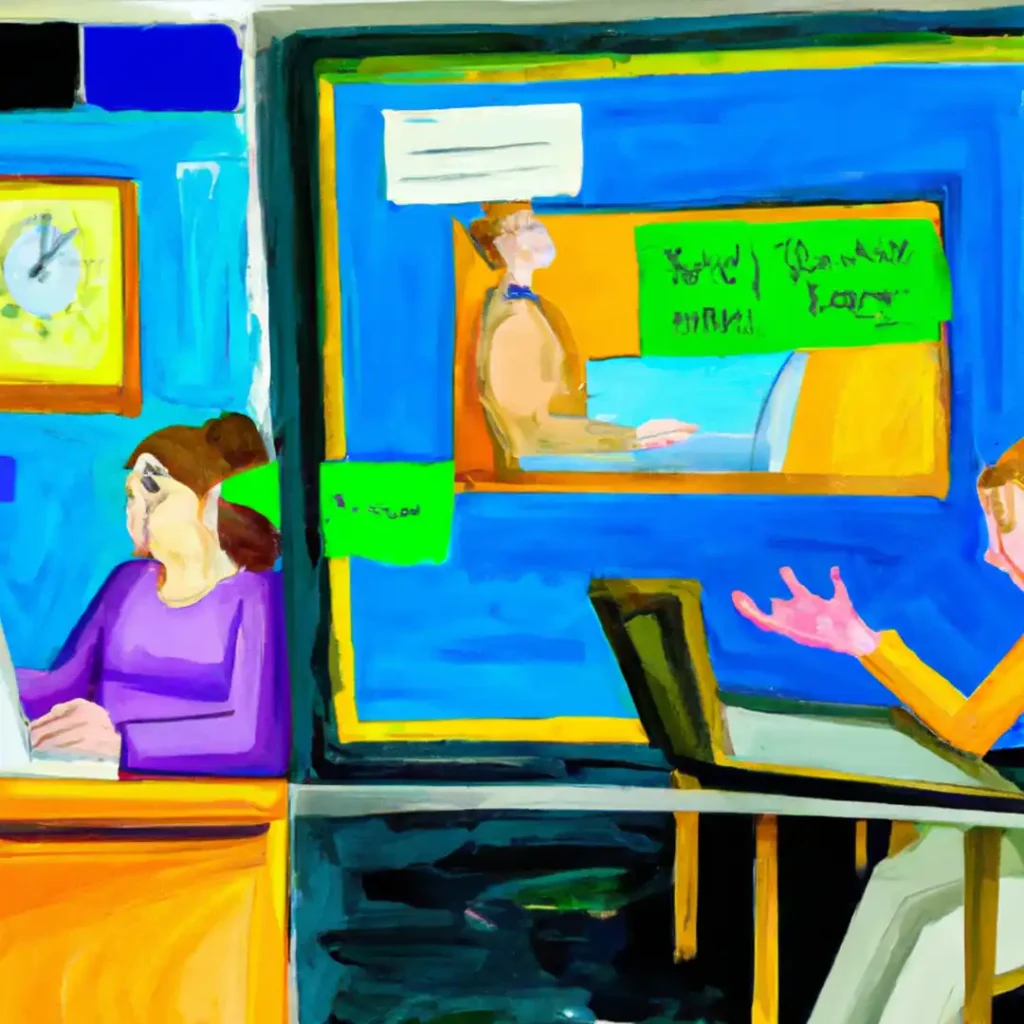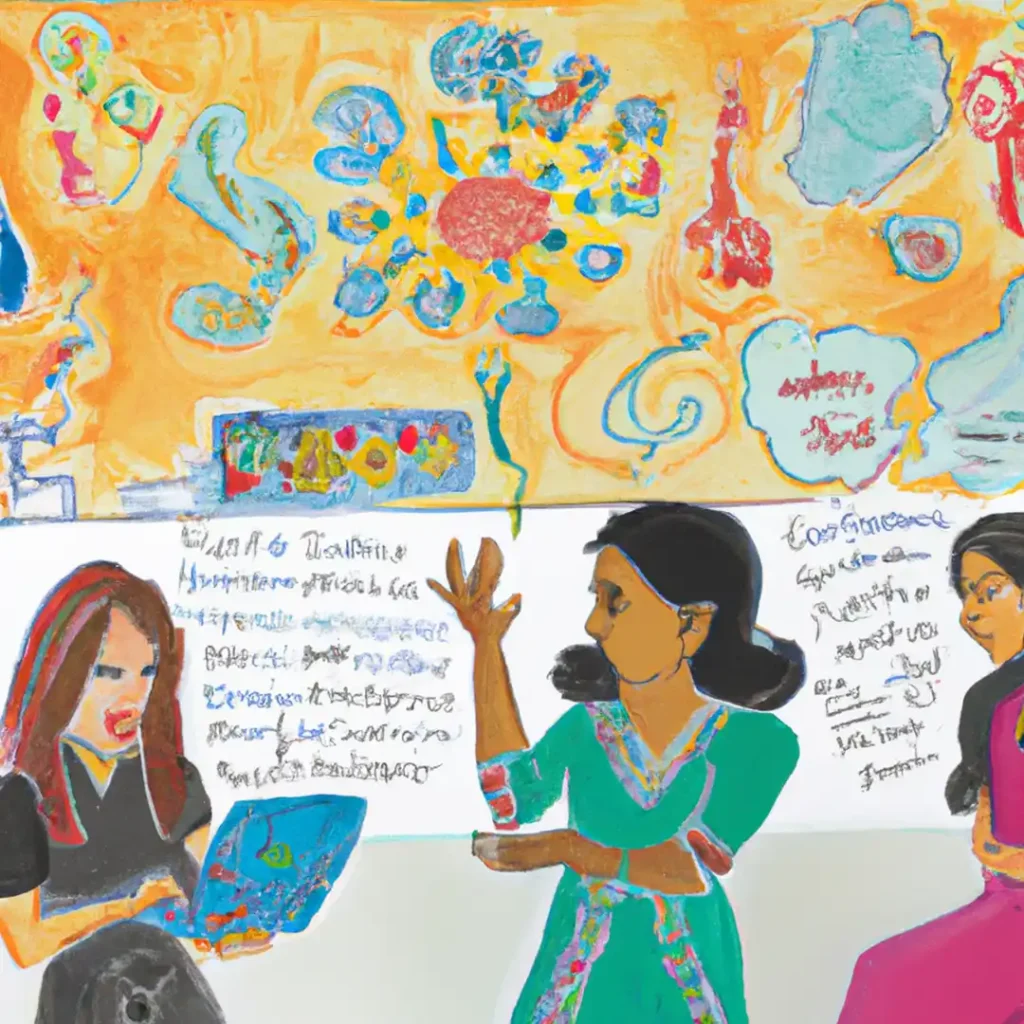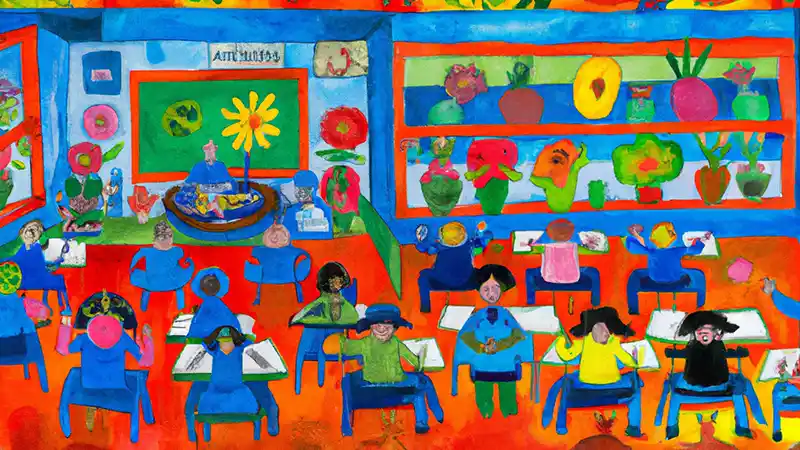The evolution of education has mirrored the broader shifts in society. As classrooms have grown more diverse, both culturally and in terms of learning abilities, the traditional one-size-fits-all approach to teaching has been increasingly challenged. This shift underscores the essential need for differentiation, a teaching philosophy and methodology tailored to accommodate the varying learning needs of individual students.
The Importance of Differentiation in Today’s Classrooms
In the past, standardized methods of teaching were revered. Uniformity was seen as a marker of fairness and equality. However, as our understanding of education has deepened, we’ve come to realize that while uniformity might imply treating everyone the same, it doesn’t necessarily equate to equity. Equity, in the realm of education, implies that each student is provided with the resources, opportunities, and teaching methods they specifically need to succeed.
Differentiation takes root in this very notion. It acknowledges that each student enters the classroom with a unique set of prior knowledge, abilities, experiences, and learning styles. Without addressing these differences, we risk leaving some students behind while others may not be adequately challenged.
In an ever-connected globalized world, classrooms are also increasingly becoming melting pots of cultures, languages, and backgrounds. Differentiation ensures that all students, regardless of their starting point, are given the best chance to flourish, fostering an inclusive learning environment.
Diverse Learning Needs: A Glimpse
Diversity in learning needs can span several dimensions:
Cultural and Linguistic Diversity: Students from different cultural backgrounds might have varying perspectives, values, and linguistic abilities.
Learning Styles: While some students might be visual learners, others might benefit more from auditory or kinesthetic methods.
Cognitive Abilities: From gifted learners to those with specific learning disabilities, cognitive abilities can vary widely within a single classroom.
Socio-Emotional Needs: Personal experiences, traumas, or socio-economic backgrounds can significantly impact a student’s approach to learning.
By understanding and appreciating these diverse learning needs, educators are better equipped to tailor their teaching strategies, ensuring that content is accessible, engaging, and beneficial for all.
Understanding Diverse Learning Needs

As we journey into the realm of diverse classrooms, it’s crucial to emphasize that each student is unique, arriving with a distinct set of strengths, challenges, preferences, and prior experiences. Recognizing and addressing these individual attributes is at the heart of differentiated instruction. But first, educators must understand the varied dimensions of learning needs.
Recognizing Various Types of Learners
The classroom isn’t just a space where teaching happens; it’s where various personalities, backgrounds, and learning predispositions converge. Here are some of the diverse types of learners you might encounter:
Cultural Learners: Students who come from varied cultural backgrounds bring with them a rich tapestry of experiences, beliefs, and perspectives. Their approach to learning might be deeply rooted in their cultural upbringing, which can influence their interactions, responses, and even the way they process information.
Language Learners: These are students for whom the primary language of instruction might not be their first language. Their linguistic background can impact their comprehension, expression, and engagement with the content.
Gifted Learners: Gifted students often exhibit higher cognitive abilities and might need more challenging tasks to keep them engaged and stimulated.
Learners with Special Needs: These students might have specific learning disabilities, physical challenges, or other needs that require particular accommodations and teaching strategies.
The Spectrum of Learning Styles and Intelligences
Understanding how students process and retain information is pivotal. Here’s a breakdown of some widely recognized learning styles and intelligences:
Visual Learners: These students prefer to see information. They benefit from charts, graphics, and visual presentations. Mind maps or infographics might be particularly effective for them.
Auditory Learners: They learn best by hearing. Lectures, discussions, or audio resources resonate most with auditory learners.
Kinesthetic Learners: Learning by doing is the mantra for kinesthetic learners. Hands-on activities, experiments, or physical movement integrated into lessons can be highly beneficial.
Logical Learners: These learners thrive on logic and reasoning. They prefer structured lessons, enjoy problem-solving tasks, and often see patterns where others might not.
Interpersonal Learners: Social interactions drive learning for these students. Group discussions, team projects, and collaborative activities align well with their preferences.
Intrapersonal Learners: Independent and introspective, these learners prefer self-study, reflection, and often benefit from journaling or independent projects.
Naturalistic Learners: These students have an affinity for nature and often grasp concepts best when they are related to the natural world.
By recognizing the spectrum of learning styles and intelligences, educators can craft lessons that cater to diverse needs, ensuring every student has the opportunity to grasp, engage with, and excel in their learning journey.
The Need for Differentiating Content
In a classroom bustling with individual personalities, abilities, backgrounds, and aspirations, it becomes abundantly clear that a singular teaching approach is unlikely to resonate with every student. This is where the concept of differentiating content emerges as a fundamental educational strategy. Let’s delve into why this approach is essential.
The Challenges of a One-Size-Fits-All Approach
Limited Engagement: When the teaching style doesn’t resonate with a student’s preferred learning method, they can quickly become disengaged. For example, purely auditory methods might alienate visual or kinesthetic learners.
Stagnation in Growth: A uniform approach might leave advanced learners unchallenged, causing them to stagnate, while learners who need more time or different resources might struggle to keep up.
Increased Frustration: Mismatched teaching and learning styles can lead to student frustration, affecting their confidence and overall attitude towards learning.
Missed Potential: Every student brings a unique potential to the classroom. A standardized approach might not tap into the myriad strengths and talents that lie within each learner.
Benefits of Content Differentiation for Learners and Educators
Personalized Learning Experience: Differentiated content ensures that lessons resonate with individual learning styles, creating a more personalized and meaningful learning experience.
Enhanced Engagement: When students encounter content tailored to their needs and preferences, they are more likely to be engaged, enthusiastic, and invested in their learning journey.
Holistic Growth: Differentiating content allows educators to challenge advanced learners while providing necessary support to those who need it, fostering holistic growth for all students.
Flexible Teaching: For educators, differentiation provides an opportunity to be innovative and flexible in their teaching methods, using a mix of tools, resources, and strategies to reach every student.
Building an Inclusive Environment: Differentiated instruction promotes inclusivity. Every student, regardless of their background, abilities, or challenges, feels valued and understood in an environment where their unique needs are recognized and addressed.
Continuous Feedback: Differentiating content often involves ongoing assessment, which provides valuable feedback. This feedback loop helps educators refine their strategies and ensures students are aware of their progress and areas of improvement.
Core Strategies for Differentiating Content

Creating a learning environment that caters to the diverse needs of students might seem daunting, but with the right strategies, it becomes a feasible and rewarding endeavor. Here’s a deep dive into some core strategies that can aid educators in effectively differentiating content.
Adjusting Complexity Based on Student Readiness (Tiered Assignments)
Tiered assignments involve crafting tasks at varied levels of complexity, ensuring each student is both challenged and supported at their readiness level. For instance:
Basic Tier: A simplified version of the task focusing on foundational concepts.
Intermediate Tier: A moderately challenging task that delves deeper into the topic.
Advanced Tier: A complex task that encourages critical thinking, problem-solving, or application of knowledge.
Flexible Grouping: Rotating Students Among Different Groups
Instead of static groups, flexible grouping entails regularly reassigning students to different groups based on various criteria—ability, interest, or even randomly. This approach:
- Reduces the stigma associated with ability-based groups
- Allows students to interact with diverse peers, fostering a broader understanding and collaboration.
Choice Boards: Letting Students Pick Tasks Aligned with Their Interests
Choice boards present students with a grid of tasks, often related to a single topic or theme. Students can choose tasks based on their interests, learning styles, or strengths. This empowers them with autonomy and aligns learning with personal inclinations.
Compacting: Streamlining Curriculum for Advanced Learners
Compacting involves pre-assessing students’ knowledge about a topic. Those who already demonstrate mastery can skip the standard curriculum and undertake more advanced tasks or projects, ensuring they remain challenged and engaged.
Learning Centers: Providing Stations with Varied Materials and Tasks
Learning centers are dedicated areas in the classroom equipped with specific resources and tasks. Each center focuses on a particular skill or topic. Students can rotate through these centers, experiencing varied modes of instruction and engaging with diverse materials.
Digital Tools and Resources for Differentiation
Incorporating technology can greatly enhance differentiation. Here are some ways digital tools can assist:
Adaptive Learning Platforms: Software that adjusts content and resources based on individual student performance.
Interactive Simulations: Virtual labs or simulations cater to kinesthetic and visual learners.
Digital Portfolios: Allow students to showcase and reflect on their work, promoting self-assessment and awareness.
Online Quizzes and Assessments: Tools that can be tailored to individual learning levels, providing instant feedback and adjusting question difficulty based on student responses.
For a complete list of strategies, read this article: 101 Essential Differentiated Teaching Strategies for Educators.
Online Platforms for Adaptive Learning

Adaptive learning has emerged as a cornerstone of modern education, leveraging technology to cater to individual student needs. These platforms use algorithms and data analytics to adjust content in real-time, ensuring each learner gets a personalized educational experience. Here are some renowned online platforms and their attributes:
The Teachers’ Blog Differentiated Instruction Lesson Planner
Focus: Lesson planning and curriculum design tailored for differentiation.
Features: This dynamic tool allows educators to input their lesson or idea, and it automatically suggests ways to differentiate the content, process, or product based on established differentiation strategies.
Benefits: Streamlines the process of creating differentiated lessons, ensuring that educators can cater to varied student needs efficiently and effectively. By providing on-the-spot suggestions, this planner aids in the quick adaptation of lessons to suit diverse classrooms, making it an invaluable resource for modern educators.
Focus: Math education for K-8 students.
Features: Adapts to each student’s ability, providing lessons that challenge and support them at their level.
Benefits: Offers a dynamic learning environment with interactive games and challenges tailored to individual proficiency.
Focus: Mathematics, science, business, and behavioral science.
Features: Utilizes AI to continuously assess student knowledge and skills, adapting content accordingly.
Benefits: Provides timely feedback and guides students to work on areas they’re ready to learn next.
Focus: Study and revision.
Features: Allows users to create flashcards, tests, and games tailored to their study needs.
Benefits: Offers auditory and visual learning modes, making it a versatile tool for various learner types.
Assessing and Adapting to Continuous Change
Education is not a static realm; it’s a dynamic, ever-evolving landscape that requires educators to be both alert and adaptable. The challenge lies not just in introducing differentiation strategies, but in ensuring they remain effective and relevant over time. Continuous assessment and adaptation play crucial roles in this journey. Let’s delve into their significance.
Importance of Ongoing Assessment
Real-time Feedback: Frequent assessment offers immediate insights into student understanding and performance. This real-time feedback enables educators to make necessary instructional adjustments before misunderstandings become entrenched.
Individual Progress Tracking: Continuous assessment allows educators to track each student’s individual progress, understanding their strengths, challenges, and growth trajectory. This granular insight ensures that support is provided exactly where and when it’s needed.
Enhanced Student Engagement: Regular checks and interactive assessments can boost student engagement, as they provide opportunities for active participation, reflection, and validation of their learning.
Informed Decision Making: Through consistent assessment, educators gather valuable data that informs future instructional decisions, ensuring that teaching methods align with current student needs.
Refining Differentiation Strategies Based on Feedback
Iterative Improvement: Just as products in the tech industry undergo iterations based on user feedback, educational strategies should be refined based on student feedback and performance. This iterative approach ensures that teaching methodologies remain optimal.
Flexible Approach: A strategy that worked brilliantly one semester might not be as effective the next. As student cohorts change, so should differentiation strategies. Being open to change and adaptable is key.
Collaborative Refinement: Educators can benefit from collaborating with colleagues, sharing insights, and brainstorming solutions. Peer feedback can provide fresh perspectives on differentiation strategies, leading to more robust methods.
Incorporating Student Voice: Students are the primary stakeholders in the educational process. By seeking their feedback, educators can gain direct insights into the efficacy of their teaching methods, making students active participants in the refinement process.
Utilizing Technology: Modern ed-tech tools often come with analytics and reporting features. By analyzing this data, educators can discern patterns, identify gaps, and refine their differentiation strategies to better cater to student needs.

